Kasi Vishwanath Jyotirling (Urdu: کسی وشواناتھ جیوتیرلنگ، Hindi:कासी विश्वनाथ जोतिर्लिंग) is located in Varanasi, Where the Varana and Asi rivers join the Ganges. a tribe called kasha used to live in Varanasi. Therefore, Varanasi was also known as Kasi and famous by the name of Shiv Vishwanath Kasi.
Kasi Vishwanath Temple - Abstract
Primary Diety and Significance:
The holy town Varanasi also known widely by the names of Kashi (Kasi) and Benares is the oldest city in the world, most famous as a major pilgrim centre for all devout Hindus. The presiding deity at Varanasi is Lord Vishwanatha along with His consort Goddess Sri Vishalakshi. Kashi is also famed as one among the twelve Jyotirlinga Kshetras of yore.
- Kasi Viswanath: Jyotirling
- Ammavaru: Kasi Visalakshi
Important Festivals:
- Maha Shivratri
- Rangbhari Ekadashi or Aamlaki Ekadasi
- Annakoot
- Sravan Maas
- Akshya Trithiya
.
| From | To | Activity |
|---|---|---|
| 2:30 AM | 3:00 AM | Temples Opens with Mangala Aarti |
| 3:00 AM | 4:00 AM | Ticket holders are permitted to Mangal Aarti Darsan |
| 4:00 AM | 11:00 AM | General Darsan |
| 11:30 AM | 12:00 AM | Midday Bhog Aarti |
| 12:00 AM | 7:00 PM | General Darsan |
| 7:00 PM | 8:30 PM | The Sapta Rishi Aarati |
| 8:30 PM | 9:00 PM | General Darsan |
| 9:00 PM | 9:30 PM | The Shringar/Bhog Aarati |
| 9:30 PM | 10:30 PM | Darshan is possible only from outside. |
| 10:30 PM | 11:00 PM | Shayana Aarti and Temple Closes |
- A Shiva temple has been mentioned in Puranas including Kashi Khanda (section) of Skanda Purana. In 490 AD, the Kashi Vishwanath Temple was built
- In 11th Century AD, Hari Chandra constructed a temple. Muhammad Ghori destroyed it along with other temples of Varanasi during his raid in 1194.
- Reconstruction of the temple started soon after. This was demolished by Qutb-ud-din Aibak.
- After Aibak’s death the temple was again rebuilt by many Hindu emperors.
- In 1351 it was destroyed again by Firuz Shah Tughlaq.
- The temple was rebuilt in 1585 by Todar Mal, the Revenue Minister of Akbar’s Court.
- Aurangzeb ordered its demolition in 1669 and constructed Gyanvapi Mosque, which still exists
alongside the temple. - Traces of the old temple can be seen behind the mosque. It is said that the Shiv-Linga was thrown in the well and the original Shiv-linga now resides there.
- The current temple was built by Ahilya Bai Holkar, the Hindu Maratha queen of Malwa kingdom, in 1780.
- In the year 1785 a Naubatkhana was built up in front of the Temple by the then Collector Mohd. Ibrahim Khan at the instance of Governor General Warren Hastings.
- In 1839, Two domes of the Temple were covered by gold donated by Punjab Kesari Maharaja Ranjeet Singh. Third dome still remains uncovered, Ministry of culture & Religious affairs of U.P. Govt. is taking keen interest for gold plating of third dome of Temple.
- Many noble families from various ancestral kingdoms (states) of India and their prior establishments, make generous contributions for operations of the temple.
Architecture:
The Kashi Vishwanath Temple Banaras consists of a mandapa and a sanctum, besides many subsidiary shrines. The sanctum has a linga made of black stone and is set into the center of the floor in a square silver altar. On the southern entrance of the temple, there are three temples in a row one behind the other, dedicated to Vishnu, Virupakshi Gauri and Avimukta Vinayaka. There are a group of five lingas enclosed in the temple called Nilakantheshvar temple. Shanishchara and Virupaksha temples are seen just above the Avimuka Vinayaka temple. There is another linga called Avimukteshvara which is seen on the right, near the entrance. Some people suggest that original Jyotirlinga at the place is not the Vishwanatha but the Avimukteshvara Jyotirlinga.There is a well called Gyan-Kupor (the well of Knowledge), located beside the temple.
- Chairman – Divisional Commissioner, Varanasi (as Acting Chairman)
(To be nominated by U.P. Govt.) - Representative of – Shree Shree Jagadguru Shankaracharya ji , Mahasmsthanam, Shringeri, Karnatka
(Ex-Officio) - Principal Secretary Finance
U.P. Govt. Lucknow (Ex-officio) - Principal Secretary Law & Vidhi Paramarshi
(Ex-officio) - Principal Secretary Dharmartha
U. P. Govt., Lucknow (Ex-Officio) - Principal Secretary Department of Culture
U.P. Govt. Lucknow - Divisional Commissioner, Varanasi
(Ex-officio) - District Magistrate, Varanasi
(Ex-officio) - Vice Chancellor,
Sampoornanand Sanskrit University, Varanasi (Ex-Officio) - Kunwar Shri Anant Narayan Singh
Kashi Naresh, (Ramnagar Durga)(Nominated by U.P. Govt.) - Prof. Chandramauli Upadhyaya
(Nominated by U.P. Govt.) - Prof. Sudhanshu Shekhar Shastri
(Nominated by U.P. Govt.) - Shri Uma Shankar Poddar (Mobile No. 9415222816)
(Nominated by U.P. Govt.) - Chief Executive Officer
(Member & Secretary)
Contact Details
Email Address is:
nyas@shrikashivishwanath.org
Postal Address:
Chief Executive Officer
SRI KASI VISHWANATH MANDIR
Vishwanath Gali, Varanasi-221 001
Telephone Number:
0542- 2392629
Varanasi is the cultural capital of India and the melting pot of Indian civilization. Varanasi or Benaras has a well-developed transport network and is well connected to all the major Indian cities and states by air, road and rail.
By Air
Varanasi is well connected and accessible to major Indian cities and tourist spots. There are daily domestic flights to and from Varanasi to several cities in India. Apart from the state owned Indian Airlines, there are many private air taxi operators that offer their services from Varanasi to other Indian cities. In fact, the daily flights on Delhi-Agra-Khajuraho-Varanasi route are quite popular among the tourists.
By Rail
Since Varanasi lies in the heartland of the North Indian plains, it is well connected to Delhi, Kolkata, Mumbai and other parts of India. There are two railway stations in Varanasi, the Kashi Junction and the Varanasi Junction (also known as Varanasi Cantonment). Rajdhani Express from Delhi or from Calcutta passes through Varanasi too. One can also catch trains from Mughalsarai, just 10 km south of Varanasi.
By Road
Situated in the flat Ganga plains, Varanasi has a good network of roads. frequent public and private buses and road transport to all the major towns of Uttar Pradesh and nearby areas.
Kashi (Varanasi) is said to be the city created by Lord Shiva and Goddess Parvati. As per the mythological legends, Varanasi is the spot, from where the first ‘Jyotirlinga’ emerged from the earth’s crust and flashed towards the heaven. The act was done to announce the final call of supremacy amongst the Hindu Gods by Lord Shiva. In the temple complex, there is a well by the name of Gyanvapi (the wisdom well), where it is regarded that the original lingam lies hidden.
Standing on the western bank of India’s holiest river Ganges, Varanasi is the oldest surviving city of the world and the cultural capital of India. It is in the heart of this city that there stands in its fullest majesty the Kashi Vishwanath Temple in which is enshrined the Jyotirlinga of Shiva, Vishweshwara or Vishwanatha.
Significance of Kasi Viswanath Temple:
- Here gravitate the teeming millions of India to seek benediction and spiritual peace by the darshan of this Jyotirlinga which confers liberation from the bondages of Maya and the inexorable entanglements of the world
- A simple glimpse of the Jyotirlinga is a soul-cleansing experience that transforms life and puts it on the path of knowledge and bhakti
- Vishweshwara Jyotirlinga has a very special and unique significance in the spiritual history of India. Tradition has it that the merits earned by the darshan of other jyotirlinga scattered in various parts of India accrue to devotee by a single visit to Kashi Vishwanath Temple.
- Deeply and intimately implanted in the Hindu mind, the Kashi Vishwanath Temple has been a living embodiment of our timeless cultural traditions and highest spiritual values.
- The Temple has been visited by all great saints- Adi Shankaracharya, Ramkrishna Paramhansa, Swami Vivekanand, Goswami Tulsidas, Maharshi Dayanand Saraswati, Gurunanak and several other spiritual personalities.
-
Vishwanath being a supreme repository of this spiritual truth thus strengthens the bonds of universal brotherhood and fellow feeling at the national as well as global levels.
Other Key temples surrounding premises and nearby Kasi Viswanath Temple:
Brief Introduction to Kasi Khand:
Kasi Khand, containing 100 chapters, goes on to describe various aspects of Kasi in detail, the various temples and deities as also how they came into existence.
There are eighteen Puranas which have been associated with several mythological occurrences.
- Brahma Puran
- Padma Puran
- Vishnu Puran
- Shiva Puran
- Bhagwat Puran
- Narad Puran
- Markandeya Puran
- Agni Puran
- Bhavishya Puran
- Brahma Vaivarta Puran
- Linga Puran
- Varah Puran
- Skanda Puran
- Wama Puran
- Koorma Puran
- Matsya Puran
- Garud Puran
- Brahmand Puran.
Of them, Skanda Purana is the largest and important one. Skanda is another name of Lord Kartikeya, son of Lord Shiva. In South India, Skanda is worshipped and called by various names i.e. Kandan, Murugan, Aaru Muga Bhagavan (six faced God) etc
Skanda Purana comprises of seven Khands (Divisions), namely:
- Maheshwar Khand,
- Vaishnav Khand,
- Brahm Khand,
- KASI KHAND
- Avanti Kshetra Khand,
- Naagar Khand
- Prabhas Khand
Of all the Khands, KASI KHAND has been read and revered by various people, which gives a detailed study of Kasi and its importance.
The Temples described as in Kasi Kand are:
- Aditya Temples
- Bhairav Temples
- Devi Temples
- Shiva Temples
- Vinayak Temples
- Vishnu Temples
- Theerthas/Ghats :
Each and every Temple/Ghat has it’s specific significance and mythological occurrence as per Kasi Khand in Skanda Puran .
Lord Surya (Aditya) Temples in Kasi neary Viswanath Temple:
Legend:
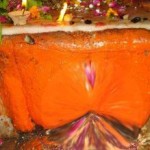 Lord Skanda described thus: Sage Kashyap had many wives of which two were Kadru and Vinata. While Kadru gave birth to hundred snakes, Vinata gave birth to three children, Owl, Garuda and Arun. Initially when Owl was born, he became the King of all birds, but due to his incompetency, the birds chose to disregard him. Therefore, to this day the birds do not have a king of their own.
Lord Skanda described thus: Sage Kashyap had many wives of which two were Kadru and Vinata. While Kadru gave birth to hundred snakes, Vinata gave birth to three children, Owl, Garuda and Arun. Initially when Owl was born, he became the King of all birds, but due to his incompetency, the birds chose to disregard him. Therefore, to this day the birds do not have a king of their own.
Of those, the premature new born child who was referred to as Arun (Dawn) in Kashi Khand, Chapter 51, was very furious at his mother’s impatience which resulted in his deformity. Arun cursed his mother that she would become a slave to the children of Kadru. Vinata pleaded innocence whereupon Arun took pity on her. He told her not to be impatient with the third egg. The child born out of this egg, will get her out of the slavery.
Having said so, Arun in due course of time wanted to rid himself of the deformity. He came to Kashi and started penitently praying to Lord Surya, who became happy with Arun. He appeared in person and blessed Arun stating that the latter will always be with him (Lord Surya) as his charioteer. Lord Surya said a person who worships me in the form of Arun Aditya will not know what is sadness and poverty will always remain at a distance.
Significance:
According to Kashi Khand, a person who worships Arun Aditya will never fall ill and there will be no obstacles in the devotee’s smooth life. The devotee will not know what misery is.
Location Of Arun Aditya:
Arun Aditya is located in Trilochaneshwar Temple which is located at A-2/80, Trilochan Ghat. The temple is approachable from Birla Hospital after Machhodari upto which place, people can travel by Auto or Cycle Rickshaw and then on foot. Alternatively, they can have a boat ride upto Trilochan Ghat and climb the stairs.
Timings of Poojas:
- The temple is open for worship 05.30 a.m. to 12.00 noon and 05.00 p.m. to 11 p.m.
- Mangala Aarti is performed at 05.30 a.m. and Shayan Aarti at 11.00 p.m.
.
Legend:
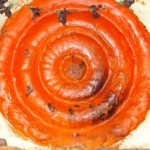 When Pandavas went in exile, Draupadi was extremely sad to look at the plight of her husbands’.
When Pandavas went in exile, Draupadi was extremely sad to look at the plight of her husbands’.
She came to Kashi and started intensely praying to Lord Surya. Lord Surya was deeply moved by her sincerity and appeared before her. He gave her one vessel and told her that the vessel would be a “never emptying vessel” inasmuch as she could go on feeding any number of guests and the vessel would never get empty. However, she should be the last one to eat. (Even now old timers say that Guests should be fed first and household ladies should be the last to eat).
Lord Surya also told Draupadi about a divine wish that Lord Shiva had given to him. According to it, if a devotee who comes to pray to Vishveshwar in Kashi, prays to Lord Surya first, Lord Surya will have the power to remove all the sorrows which are clinging to the devotee.
Hence, The Aditya located here came to be called as Draupad Aditya
Significance:
Lord Surya also states here that a person who sincerely prays to him at this place will never remain hungry. (Kashi Khand, Chapter 49).
.Location of Draupad Aditya
Draupad Aditya is located at Ck. 35/21, Akshay Vat, near Vishweshar Temple.
There are three approach lanes one via Dashashwamedh Road, 2 via Bansphatak and third via Gyanvapi. It is difficult to prescribe the convenient entry point because due to heavy police patrolling, entry points keep changing. During peak rush days like Mondays and other important festivals, the police may regulate the pilgrims through Gyanvapi and the exit point may be through Bansphatak etc. Since the temple is located in deep Gully, it is advisable to visit the temple alongwith a local person or Guide.
This place also houses Nakuleshwar, which finds mention in Kashi Khand.
Timings of Pooja:
The place is open for worship practically throughout the day. People can perform self poojas at the place.
.
Legend:
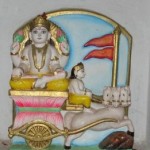 Kashi Khand states that Lord Surya positioned himself at a particular place in Kashi so as to worship Holy river Ganges.
Kashi Khand states that Lord Surya positioned himself at a particular place in Kashi so as to worship Holy river Ganges.
It is believed that even today Lord Surya is residing at the above place reciting Stotras of Ganges and blessing his devotees. The form of Surya at the Ghat of Ganges came to be known as Ganga Aditya.
Significance:
A staunch devotee, who worships Ganga Aditya will never face any mishap and will never be cheated by anyone. (Kashi Khand, Chapter 51).
Location of ganga aditya
Ganga Aditya is located at No. 1/68, below Nepali Mandir, Lalita Ghat. The deity is situated in a room covered with iron grill and facing the river Ganges. From Vishwanath temple, a devotee should approach Saraswati Phatak and proceed further straight and after walking about 200 metres, he will approach a place where Phoote Ganesh is located. It is advisable to ask for Nepali Pasupatinath temple for location. Nepali Pasupatinath temple is a landmark below which, devotees can find Ganga Aditya.
Types of pooja performed:
Devotees can have darshan practically throughout.
.
Legend:
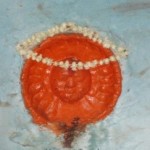 Once Lord Surya was travelling in the sky and from a distance he could see Adi Keshav (Lord Vishnu) worships a Shiv Ling. Being very curious, Lord Surya came down to the earth and after Adi Keshav finished the prayers, put forward a question to the latter.
Once Lord Surya was travelling in the sky and from a distance he could see Adi Keshav (Lord Vishnu) worships a Shiv Ling. Being very curious, Lord Surya came down to the earth and after Adi Keshav finished the prayers, put forward a question to the latter.
Lord Surya asked when the entire world regards Lord Vishnu as Antaratma, the latter should be worshipped. Lord Surya was surprised why Lord Vishnu was worshipping Lord Shiva. To quell his anxiety, Lord Vishnu replied that in Kshetra Lord Shiva is the supreme Lord and he should be worshipped by everyone.
Lord Vishnu extensively described the importance of Linga Pooja in as much as a devotee, who performs abhishek of a Shiv Ling and consumes the water as prasad, gets the punya of taking bath in all religious Teerths (Sacred Ponds). Lord Vishnu advised Lord Surya also to worship Lord Shiva in Ling form in . ( Khand, Chapter 51).
Lord Surya piously regarded Adi Keshav as his Guru for giving this sacred knowledge and Lord Surya came to be called as Keshava Aditya at that place.
Significance:
According to Khand, a person who takes bath in Padodak Teerth (Koop) and worships Keshava Aditya gets rid of all sins. Special importance is attached to Magh month (Jan 21-Feb 20) on any Saptami day (7th day after Amavasya or Poornima) when it coincides with Sunday. On such days, devotees are advised to take bath in Padodak Koop and worship Keshava Aditya.
Location of keshava aditya:
Keshava Aditya is located at No. A-37/51, Adi Keshav Temple, Rajghat Fort. Devotees can travel upto this place by autorickshaw or cycle rickshaw or car.
Timings of Poojas:
The place of worship is open from 06.00 a.m. to 12.00 Noon and from 04.00 p.m. to 10.00 p.m. The timings may be flexible.
.
Legend:
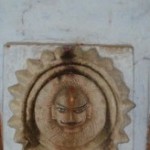 Once, Sage Kashyap’s wives Kadru and Vinata were played a guess game and that game, Vinata lost the game and was enslaved to Kadru and her snake sons. She was very much ill treated and her son, Garuda was deeply pained at her woeful plight.He appealed to the sons of Kadru to release his mother. They agreed to do so on one condition that he should bring them Amrit (nectar).
Once, Sage Kashyap’s wives Kadru and Vinata were played a guess game and that game, Vinata lost the game and was enslaved to Kadru and her snake sons. She was very much ill treated and her son, Garuda was deeply pained at her woeful plight.He appealed to the sons of Kadru to release his mother. They agreed to do so on one condition that he should bring them Amrit (nectar).
Lord Vishnu was deeply touched by the respect which Garuda had for his mother as well as his filial obligations and told Garuda that henceforth he (Garuda) would be Lord Vishnu’s vehicle. As regards Amrit, Lord Vishnu let Garuda take it to the snake children as ransom for release of his mother but cautioned that under no circumstances the snakes were to drink it. Garuda took the amrit and gave it to the snake children. His mother was freed by the snakes as per the agreement.
Later, Vinata told her son Garuda that she must have committed some sin which made her a slave. She desired to go to Kashi for atonement of her sins. Garuda took her to Kashi where Garuda installed a Shiv Ling and started praying ardently. Vinata started worshipping Lord Surya in his form as Khakholkh Aditya. Lord Shiva appeared in person and blessed Garuda stating that the latter would be known by everyone in the world as the vehicle/ride (vahana) of Lord Vishnu.
Lord Surya also appeared in person before Vinata and blessed her, whereupon Vinata was absolved of all her sins.
Significance:
According to Kashi Khand, Chapter 50, Khakholkh Aditya finds mention in the proximity of Pilpila Teerth.
Location of khakholkh aditya
Khakholkh Aditya is located at Kameshwar Temple at A-2/9 North of Trilochan. The temple is approachable from a famous locality called Machhodari. Devotees can travel upto Macchodari, take a right circular turn, reach Birla Hospital and take a right turn. Kameshwar temple is located in a Gully there.
Pilpila Teerth mentioned in Kashi Khand is existent now in the form of a Koop (Well) near Trilochaneshwar.
Types of poojas
The temple is open for worship from 05.00 a.m. to 12.00 Noon and 05.00 p.m. to 10.00 p.m.
Mangala Aarti is held at 5.30 a.m. and Shayan Aarti at 09.30 p.m.
.
In ancient times, Lolark Kund was believed to be in confluence with Ganga and Assi a rivulet but now this is in form of a Kund (Pond) only. Even now, during rainy days, Ganges water enters the Kund through some underground source.
Great importance is attached to taking bath in this Pond in Magha Month when Shukla Shashti or Saptmi (sixth or seventh day after Amavasya) coincides with Sunday. Bathing on such a day in this kund and performing puja etc. will grant the devotees all their desires. The devotee’s sins accumulated over seven previous births will be cleansed away by the above religious act. ( Khand, Chapter 46).
A person who religiously prays to Lolark Aditya on every Sunday is absolved of all his sins and all his skin ailments will be healed. ( Khand, Chapter 46).
Location of lolark Aditya
Lolark Aditya/Lolark Kund is located near Tulsi Ghat. Persons can travel upto Marwadi Seva Sangh, Assi in a rickshaw and walk on foot upto Lolark Kund. Alternatively, they can have a boat ride up to Tulsi Ghat and climb the steps.
Timings of Poojas
The place is open self worship practically twenty four hours daily. Special importance is attached to prayers by self on Sundays. Presently, on a particular day every year (Lolark Chat) which falls in the Bhadrapad Month Shukla Paksha Shashti (6th day after Amavasya) devotees come in large numbers for taking bath in Lolark Kund. Further, Margashirsha Month, Shukla Paksha Shashti (6th day after Amavasya), is also an important day.
.
Legend:
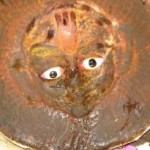 Once Lord Surya installed a Shiv Ling known as Gabhasteeshwar and a devi idol known as Mangala Gauri at Panchanada Teerth (Panchganga Ghat) and started immensely praying to Lord Shiva
Once Lord Surya installed a Shiv Ling known as Gabhasteeshwar and a devi idol known as Mangala Gauri at Panchanada Teerth (Panchganga Ghat) and started immensely praying to Lord Shiva
The intensity of Lord Surya’s prayers started reflecting in the extreme heat generated thereby. Sunrays started getting warmer and warmer. Finally it became extremely unbearable for all living beings and all physical activities practically came to a standstill.
Lord Shiva and Goddess Parvaty came to know about this and they appeared in person in front of Lord Surya. Lord Shiva gently touched Lord Surya, whereupon the latter’s extreme heat slowly subsided and he became more or less cool. Lord Surya opened his eyes and started singing praises of Goddess Parvaty and Lord Shiva whereupon both of them became extremely happy. They granted several divine wishes to Lord Surya.
Lord Shiva told Lord Surya that when the latter was performing pooja of the former, only the sunrays were visible and the body of Lord Surya was not visible. Accordingly, Lord Surya will be called Mayukh Aditya. Mayukh means effulgence.
Significance:
Lord Shiva also stated that a devotee who worships Mayukh Aditya on Sundays will never fall ill. (Kashi Khand, Chapter 49).
Location of Mayukh Aditya
Mayukh Aditya is located at No. K-24/34, Mangala Gauri Temple, Panchganga Ghat. Devotees can travel upto Bhaironath (Kaal Bhairav) by rickshaw and walk on foot upto this temple through labyrinthine lanes. This walk usually takes about twenty to thirty minutes. Alternatively, they can take a boat ride upto Balaji Ghat/Panchganga Ghat and walk up the stairs.
The idol of Mayukh Aditya always remains moist and cool. If we physically remove the moisture and make it dry, the idol will again become moist. The reason for this is Lord Shiva touched Lord Surya to reduce his intense heat (as mentioned above). Old timers in and around the temple believe that the hidden river Dhootpapa is flowing beneath the surface, causing this moistness.
The temple also houses Gabhastheeshwar, Mangala Gauri and Mangal Vinayak. In the close vicinity are temples of Brahmacharini and Brahmeshwar.
Timings of Pooja
The temple is open from 05.00 a.m. to 01.00 p.m. and from 03.00 p.m. to 10 p.m. Aarties are performed in the evening. .
.
Legend:
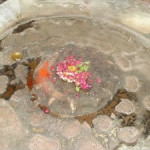 Once, Lord Krishna got infuriated from the motivation of Sage Narada, cursed his son Saamba that he will be inflicted with Leprosy. However, Saamba pleaded innocence and Lord Krishna was very much moved. He told Saamba that to get rid of this curse; he should go to Kashi and pray to Lord Surya.
Once, Lord Krishna got infuriated from the motivation of Sage Narada, cursed his son Saamba that he will be inflicted with Leprosy. However, Saamba pleaded innocence and Lord Krishna was very much moved. He told Saamba that to get rid of this curse; he should go to Kashi and pray to Lord Surya.
Accordingly, Saamba came to Kashi, dug a Kund which was called Saamba Kund and undertook rigorous penance and pooja of Lord Surya. In due course, he was cured of this dreaded disease. Lord Aditya who is present at this place came to be called Saamba Aditya.
Significance:
According to Kashi Khand Chapter 48, a person who takes bath in Saamba Kund religiously on Sundays at sunrise and prays to Saamba Aditya will get cured of any incurable disease, any married lady performing such prayers will always remain Sumangali (Suhagin-lady whose husband is alive) and childless couple will be blessed with child.
Saamba Kund is now known as Surya Kund / Suraj Kund.
Location of Saamba Aditya
Saamba Aditya is located at D-51/90 Surya Kund (Suraj Kund). This is a famous locality. Devotees can travel upto this place in a cycle rickshaw.
Timings of Pooja
The place is open for worship from 06.30 a.m. to 01.00 p.m. and from 07.00 p.m. to 09.00 p.m.. Special importance is attached to Magh month (Feb-March) on Sundays when Navami conjoins. Equally important is Chaitra month (March-April) Sundays.
.
Legend:
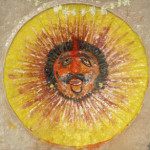 According to Kasi Khand, Chapter 47, long time back, one girl named Sulakshana, lost her parents in a miserable situation, started praying to Lord Surya in his form of Uttarark Aditya. She underwent severe penance for a considerably long time and observed that a white goat used to come daily and constantly stare at her. The goat used to take bath in the Kund in the morning, wait for the whole day and in the evening, it used to eat dry grass, drink water from the Uttarark Kund and go back. This went on for several years.
According to Kasi Khand, Chapter 47, long time back, one girl named Sulakshana, lost her parents in a miserable situation, started praying to Lord Surya in his form of Uttarark Aditya. She underwent severe penance for a considerably long time and observed that a white goat used to come daily and constantly stare at her. The goat used to take bath in the Kund in the morning, wait for the whole day and in the evening, it used to eat dry grass, drink water from the Uttarark Kund and go back. This went on for several years.
At last, Both Lord Shiva and Goddess Parvaty were deeply moved by the prayers of Sulakshana and Lord Shiva offered the girl a divine wish.
Sulakshana thought for a moment and saw the Goat standing nearby. She requested Lord Shiva to grant a boon to the Goat instead of herself. Goddess Parvaty was moved by the philanthropy exhibited by Sulakshana and ordained that Sulakshana will always be with Goddess Parvaty as a companion. The goat will take rebirth as daughter of Kasi Raja in consideration of its devotion to Uttarark Kund.
According to Kasi Khand, Goddess Parvaty stated that the Kund will be remembered for the sincerity of the Goat,
Significance:
All devotees who take bath in the above Kund in Paushya Month (December-January) on Sundays and pray to Uttarark Aditya will be divinely blessed.
The Kund was named Barkari Kund (reference : Sankshipta Skanda Puran, Gita Press, Page No. 831). The Kund is now known as Bakria Kund in local parlance.
Location of Uttarark Aditya
Uttarark Aditya is located in Alaipur, Bakaria Kund, near Varanasi City Station. Devotees can travel upto the place by Auto/Cycle Rickshaw.
Timings of Pooja
The place of worship is open from 05.00 a.m. to 12.00 noon and from 05.00 p.m. to 10.00 p.m. Aarti is held at 08.00 a.m. in the morning.
.
Legend:
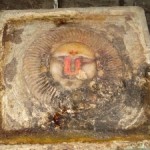 Long time back, one person named Vimal was residing in a hilly place. Due to some sins committed in his earlier life, he was afflicted with Leprosy. He had heard about Kashi and he left his family and belongings, came to Kashi and started worshiping Lord Surya with all fervour.
Long time back, one person named Vimal was residing in a hilly place. Due to some sins committed in his earlier life, he was afflicted with Leprosy. He had heard about Kashi and he left his family and belongings, came to Kashi and started worshiping Lord Surya with all fervour.
He performed all sorts of Poojas, Pushp Archana and other rituals as are prescribed for Lord Surya. His pious actions pleased Lord Surya who appeared before him and with his divine blessings; Vimal was cured of his ailment (Leprosy). Lord Surya also offered a divine wish to Vimal..
Vimal appealed to Lord Surya that all his devotees should never be afflicted by this dreaded disease. They should not face any sort of difficulties in their life. Lord Surya granted accordingly and stated that devotees will know him as Vimal Aditya at that place.
Significance:
According to Kashi Khand, a mere darshan of Vimal Aditya is capable enough to cure all kinds of diseases
Location of Vimal Aditya:
Vimal Aditya is located at No. D-35/273, Gully behind Khari Kuan, Jangambari, near Godowlia. People can reach this place by rickshaw..
Timings for Poojas:
The place of worship remains practically open throughout.
.
Legend:
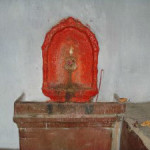 According to Kashi Khand, once a staunch devotee called Harit, who was very old in age, stationed himself near Visalakshi Devi and intensely prayed to Lord Surya. After a long time, Lord Surya appeared before him and told the old man that he (Lord Surya) was pleased and the old man may seek any divine boon.
According to Kashi Khand, once a staunch devotee called Harit, who was very old in age, stationed himself near Visalakshi Devi and intensely prayed to Lord Surya. After a long time, Lord Surya appeared before him and told the old man that he (Lord Surya) was pleased and the old man may seek any divine boon.
The old man said “for performing Tap (Tapas – rigorous ascetic practices), a devotee needs sufficient strength. There is nothing in this world as good as Tapas which gives prosperity, enlightenment and all joys. However, one needs to be young and virile enough for carrying out Tapas.” Accordingly, the old man requested Lord Surya that he should be made young.
Lord Surya was deeply moved by the sincerity and devotion of the old man and he granted boon accordingly. Thus the old man became young. Since Lord Surya was eulogized by an old man at that place, the Lord came to be known as Vriddh Aditya at that place.
Significance:
According to Kashi Khand, a person who regularly prays to Vriddh Aditya will always remain energetic like a young man.
Location of Vriddh Aditya
Vriddh Aditya is located at D-3/15, South of Bare Hanumanji at Mir Ghat. Devotees can approach this place by traveling upto Dasaswamdh Vishwanath Gulli by rickshaw and then on foot in the Gully. Alternatively, they can take a boat ride up to Mir Ghat and climb up the stairs.
Timings of Pooja
The temple is open for worship from 06.30 a.m. to 09.30 p.m. The timings may change. While the idol is situated inside the premises, there is a Surya Chakra in the outer wall of the premises. Devotees can pray/perform pooja on their own.
.
Kaal Bhairav Temple Near by Viswanath Temple in Kasi:
Once, Lord Brahma, Yagneshwar (symbolic of Narayan) and several great Sages, desired to know, that who was indestructible and supreme and asked the same question to the four Vedas.
Rig Veda replied that the omnipotent deity who controls all living beings, named Rudra is supreme. Yajur Veda replied that He, whom we worship through various Yagnas (Yagam) and other such rigorous rituals, is none other than Shiva, who is supreme. Sam Veda stated that the respected figure who is worshipped by various Yogis and that Person who controls the entire world is none other than Triambakam. Finally, Atharva Veda said, all human beings can see the Lord through Bhakti Marg and such a deity who can remove all the worries of human beings is indeed Shankar. In a nut shell, all the four Vedas proclaimed that Lord Shiva is the Ultimate Being.
While Lord Brahma and Yagna Naraya started laughing in disbelief, Lord Shiva appeared as a powerful divine light in their midst. Lord Brahma stared at that being furiously with his fifth head. Lord Shiva immediately created one living being and made him as King of Kaal and will be known as Kaal Bhairav Shiva further stated Kaal Bhairav will always be in Kasi removing all sins of the devotees and therefore, he will be known as Paap Bhakshak.
Meanwhile, Lord Brahma’s fifth head was still burning with fury and Kaal Bhairav plucked that head. Lord Shiva directed Bhairav to go around various places but Brahma Hatya Dosh (affliction on account of hurting a Brahmin) will always follow him. Lord Shiva created a dangerous and fierce looking female figure, named Brahma Hatya and asked her to follow Kaal Bhairav wherever he went.
Finally, Kaal Bhairav reached the Moksha Puri, Kashi. The moment Kaal Bhairav entered Kasi Brahma Hatya started shouting, screaming and finally disappeared into the netherworld. The head of Brahma, (Kapal) fell at a place which was called Kapal Mochan and there was a Teerth which was later called Kapal Mochan Teerth. Then onwards Kaal Bhairav stationed himself permanently in Kasi giving shelter to all his devotees
Significance:
Ashtami day (eighth day after Poornima) in the month of Margashirsha is an important day for worshipping Kaal Bhairav. Besides, Sundays, Tuesdays, Ashtami and Chaturdasi days are very important for worshipping Kaal Bhairav. A person who circumabulates Lord Kaal Bhairav eight times will be absolved of all the sins committed by him. A devotee who worships Kaal Bhairav for six months will attain all types of Siddhi. (Kashi Khand, Chapter 31).
Location of Kaal Bhairav Temple:
Kaal Bhairav is located at K-32/22, Bhaironath. People can approach this place by rickshaw either through Bisheshwarganj cross roads or through Golghar (Maidagin). This is a very famous temple and devotees will be guided by the local residents.
Timings for Pooja:
The temple remains open from 05.00 A.M. to 1.30 P.M.
and from 04.30 P.M. to 09.30 P.M. There is heavy rush of devotees on Sundays and Tuesdays.
Other Bhairav Temples near Viswanath Temple:
A Brief about Bhairav Temples:
After Goddess killed the evil demon Durgasur (Kindly refer Durga Devi), she created nine shaktis which were stationed in various places in Kashi to protect the holy city and its denizens. (Kashi Khand, Chapter 72
In the same way eight forms of Bhairavs were created who were positioned at various places in Kashi. These Bhairavs protect the devotees from all sorts of evils and give the devotees happiness and prosperity in their lives
Devotees who worship these Bhairavs will develop a strong mental frame work and will be courageous..

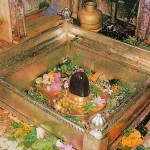

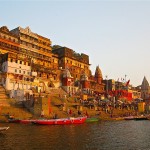

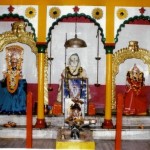
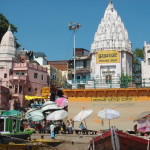
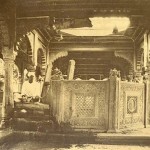
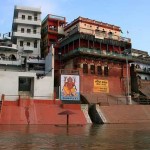
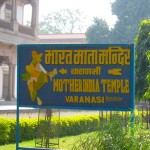
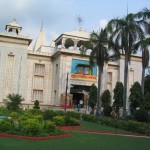
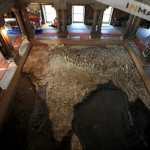
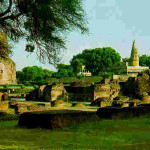
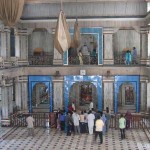
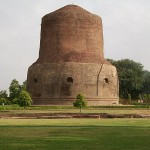
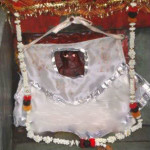
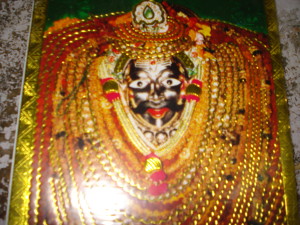
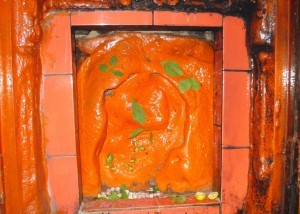
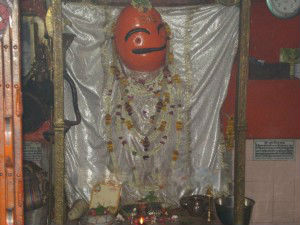
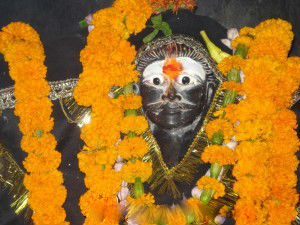
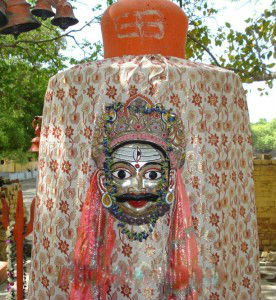
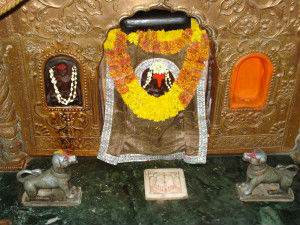
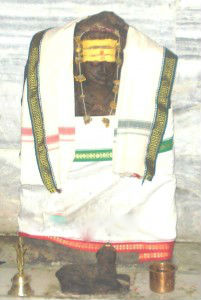
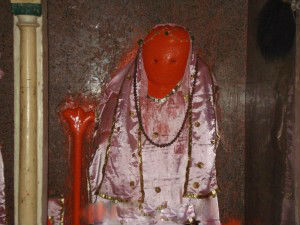
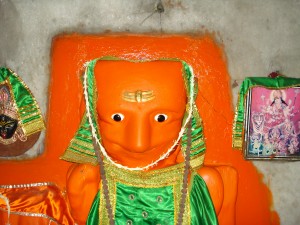
No comments yet.